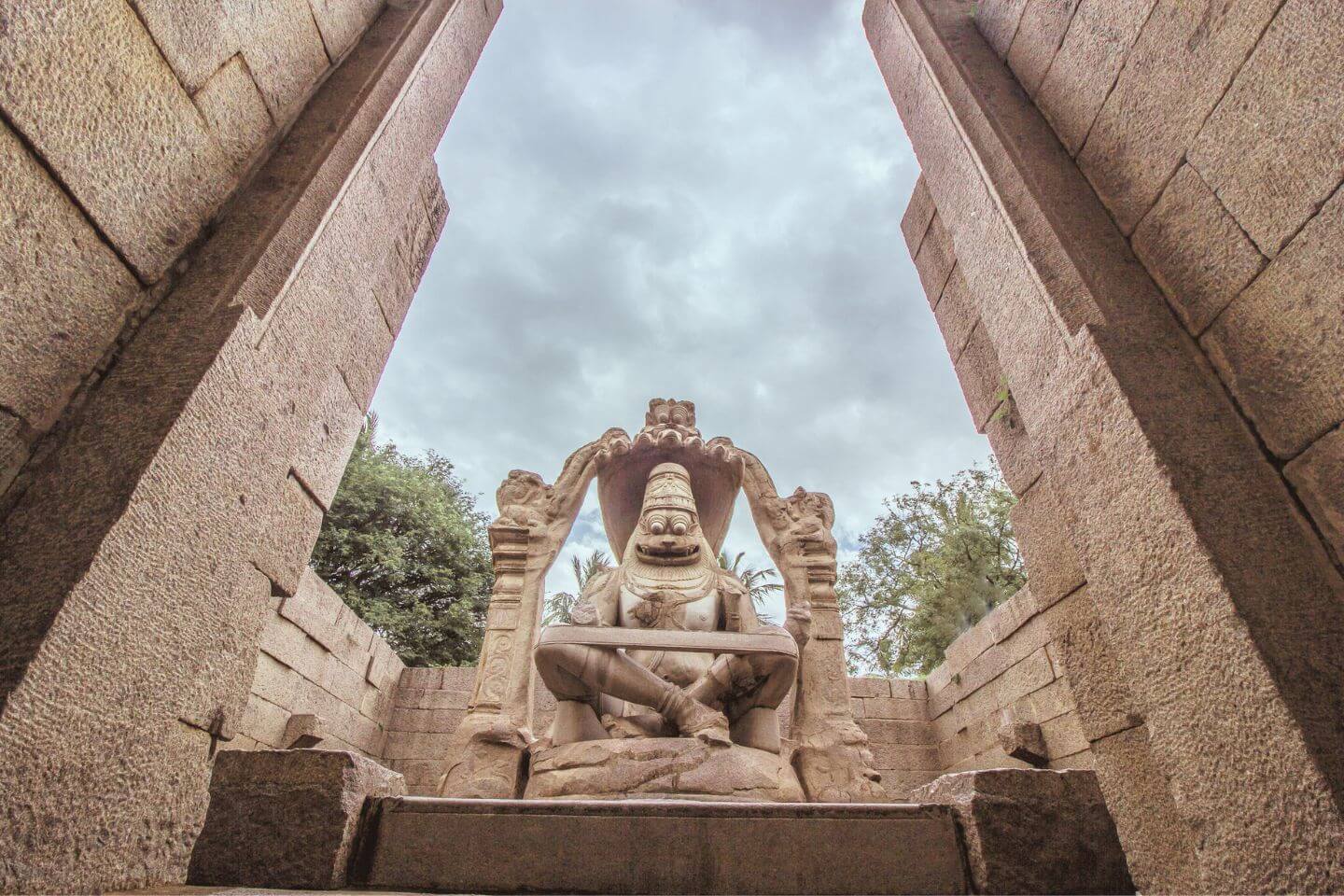Nestled amidst the rugged terrain of Karnataka lies Hampi, a small town frozen in time. It’s full of ancient temples dating back to the Vijayanagara Empire. Its grandeur, however, has existed since the Mauryan Empire, and it has seen many changes since.
Visiting Hampi is like travelling back in time. It’s mentioned in the Hindu epic Ramayana under various names such as Pampa-kshetra, Kishkindha-kshetra and Bhaskara-kshetra.
But Hampi is more than just a relic of history. It’s still a living, breathing town despite facing numerous wars and the passing of time.
Hampi stands strong, waiting for curious explorers to explore the secrets within. The group of historical monuments in Hampi has been listed as a UNESCO World Heritage Site. Hampi’s story, though, extends far beyond the grandeur of its monuments.
Several myths are part of the history of Hampi, and its ancient ruins offer an opportunity to uncover India’s history and culture.
Legends about Hampi
The name of the town is said to be derived from Pampa, another name of the Goddess Parvati. According to popular folklore, Lord Shiva performed his penance on Hemakuta Hill nearby, and Pampa was determined to marry him. She, too, sat in penance on a hill and used various tactics to evoke sympathy in Shiva’s mind.
Lord Shiva realized Pampa’s dedication and married her. The nearby river was named Pampa, gradually morphing into Hampa. Thus, this place came to be called Hampe or Hampi. The location where they married is said to be the place where Virupaksha Temple was established.
Another popular legend about Hampi comes from the Hindu epic Ramayana. The area around Hampi has many close resemblances to the place described as Kiskindha, the monkey capital. Several places are recognised as spots where Ram and Lakshman stayed with the monkey kings, Sugreeva and Bali. The Hazara Rama Temple here is said to be their private temple.
History of Hampi
The existence of Hampi as an active region of civilization has been found since the 2nd century BCE. Many artefacts dating to that time have been found during excavations. Rock inscriptions suggest Hampi was even a part of the Mauryan Empire during the 3rd century BCE.
One of the earliest recorded mentions of the town is, however, from between the 6th and 8th centuries. It’s in the Chalukya-era scripts that Hampi is mentioned as Pampapura.
By the 10th century, Hampi had become a centre of religious and educational activities. It was ruled by Hindu dynasties like the Chalukyas and the Hoysalas. They built several shrines in Hampi and around, the most popular of which was the Virupaksha Temple.
However, when the armies of the Delhi Sultanate (a Muslim dynasty) invaded the region, much of the area around Hampi was destroyed. This invasion in the 14th century was once led by the army of Alauddin Khalji and again by the army of Muhammad bin Tughlaq.
What followed was the rise of the Vijayanagara Empire. It’s said that the founders, Harihara I and Bukka I, were commanders in the army of the Hoysalas.
Vijayanagara kings made the capital around Hampi. They grew the kingdom into one of the most famous Hindu empires in South India, ruling the region for over 200 years. They occupied almost all of southern India.
During their rule, the Vijayanagara rulers improved infrastructure, making Hampi one of the biggest trading centres in the world. Merchants from all over the world set up their shops here.
In 1565, the empire was attacked by a coalition of Muslim sultanates. The armies conquered and destroyed the town. The plundering lasted around six months, and Hampi’s infrastructure was shattered entirely.
Although many kings ruled the region afterward, Hampi could never regain the lost glory. The ruins are now called the Group of Monuments at Hampi.
Vijayanagara Era Architecture in Hampi
Hampi was rich in art and architecture, and it was at its peak during Vijayanagara rule. The rulers were lovers of religion and art; they worked hard to set up magnificent buildings and public infrastructure. You can reconstruct the history of Vijayanagara through the archaeology of Hampi.
The group of monuments has been studied in three broad zones to understand the history of Hampi: the sacred centre, the urban core (or the royal centre), and the rest of the metropolitan Vijayanagara.
The sacred centre, alongside the river, contains the oldest temples. The royal centre has over sixty ruined temples and public utility infrastructure built during the Vijayanagara Empire. The buildings predominantly followed South Indian Hindu architecture, along with elements from Indo-Islamic architecture.
These ruins of Hampi almost depict the history of India. The site is multi-religious and multi-ethnic, even though most monuments are Hindu. It has six Jain temples and monuments and a Muslim mosque and tomb, all of which stand next to each other.
Historical Places to Visit in Hampi
1. Virupaksha Temple
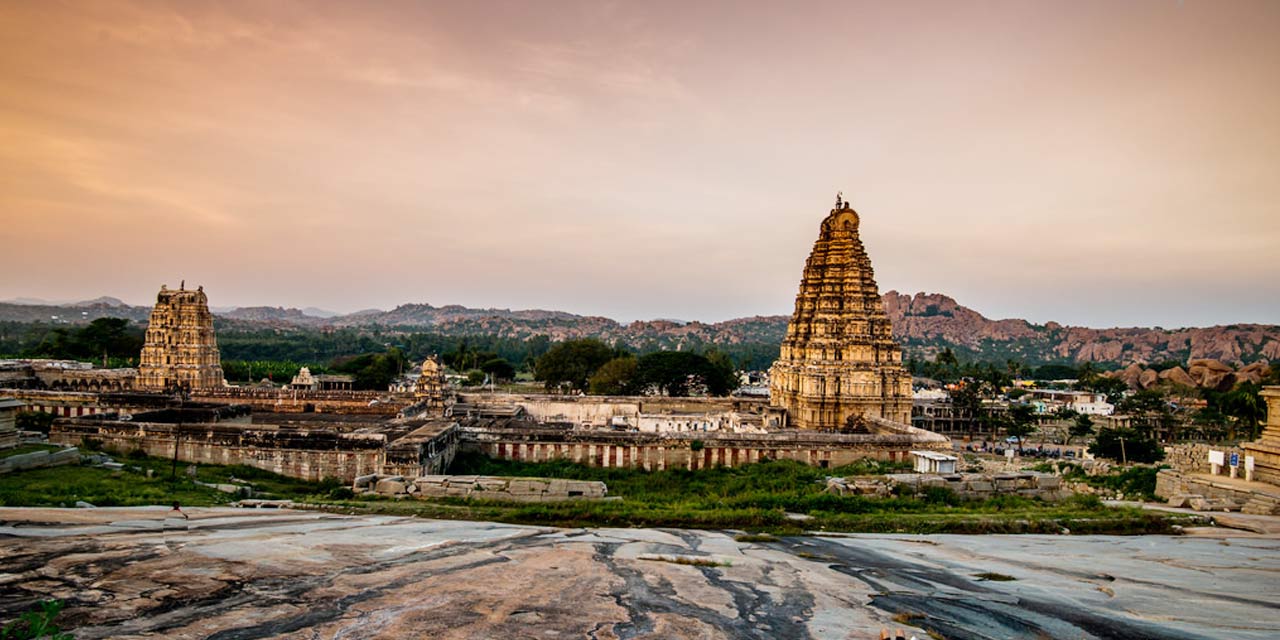
Virupaksha Temple is the main pilgrimage centre in Hampi, and it’s also considered one of the oldest functioning temples in the country. The temple is dedicated to Lord Virupaksha (an incarnation of Lord Shiva), whose idol is in the form of Shivalinga.
2. Vijay Vittala Temple
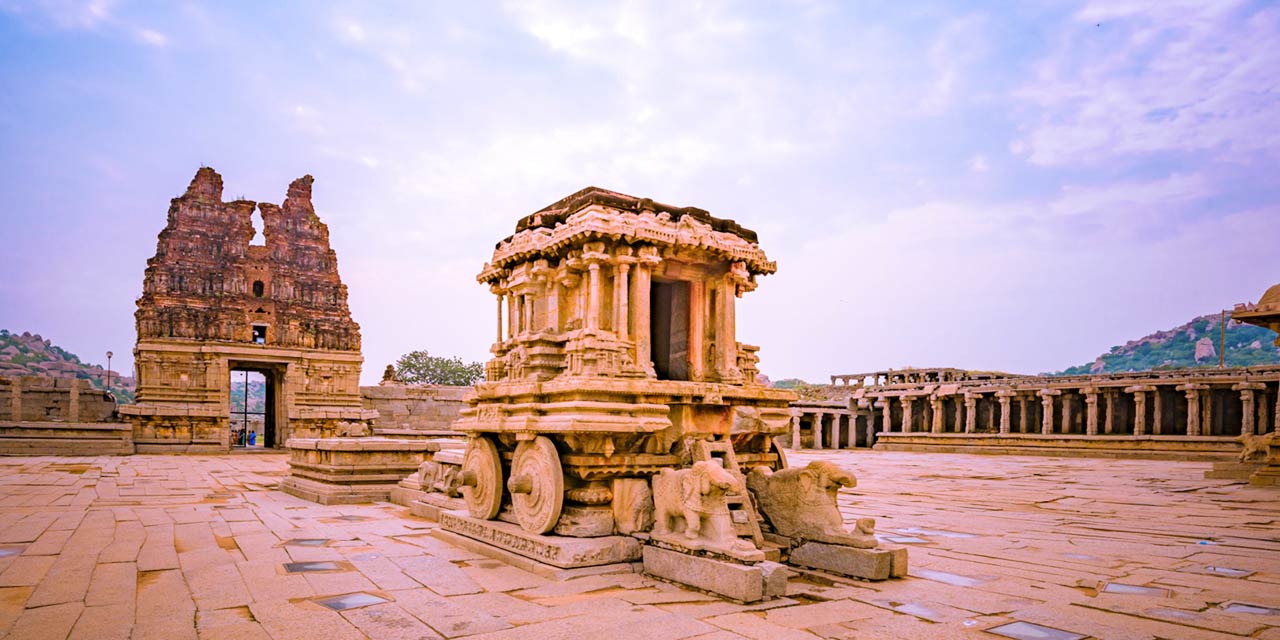
It’s another of the architectural wonders in the history of Hampi. It’s a large temple complex with some of the renowned structures, such as the stone chariot and musical pillars. The temple is considered a masterpiece of Vijayanagara architecture.
3. Royal Enclosure
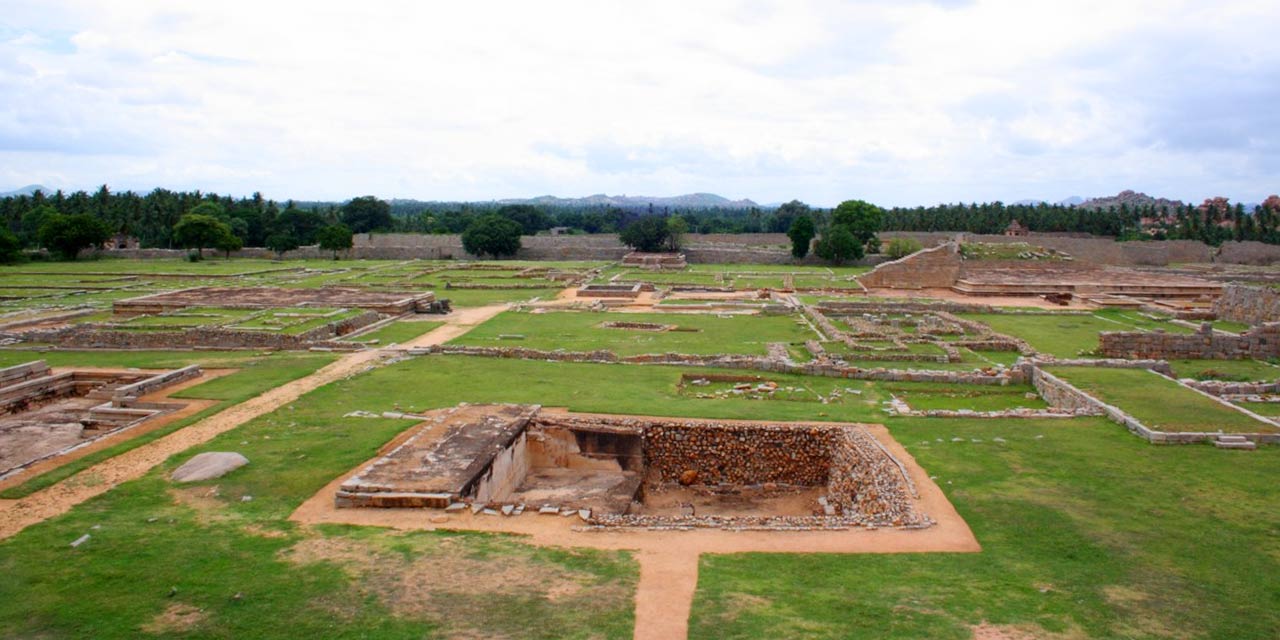
It’s an expansive, walled complex that once used to be the ceremonial and administrative hub of the empire. Mahanavami Dibba is the most impressive structure here. Durbar Hall, granaries and water tanks are a few other structural ruins in the complex.
4. Zenana Enclosure
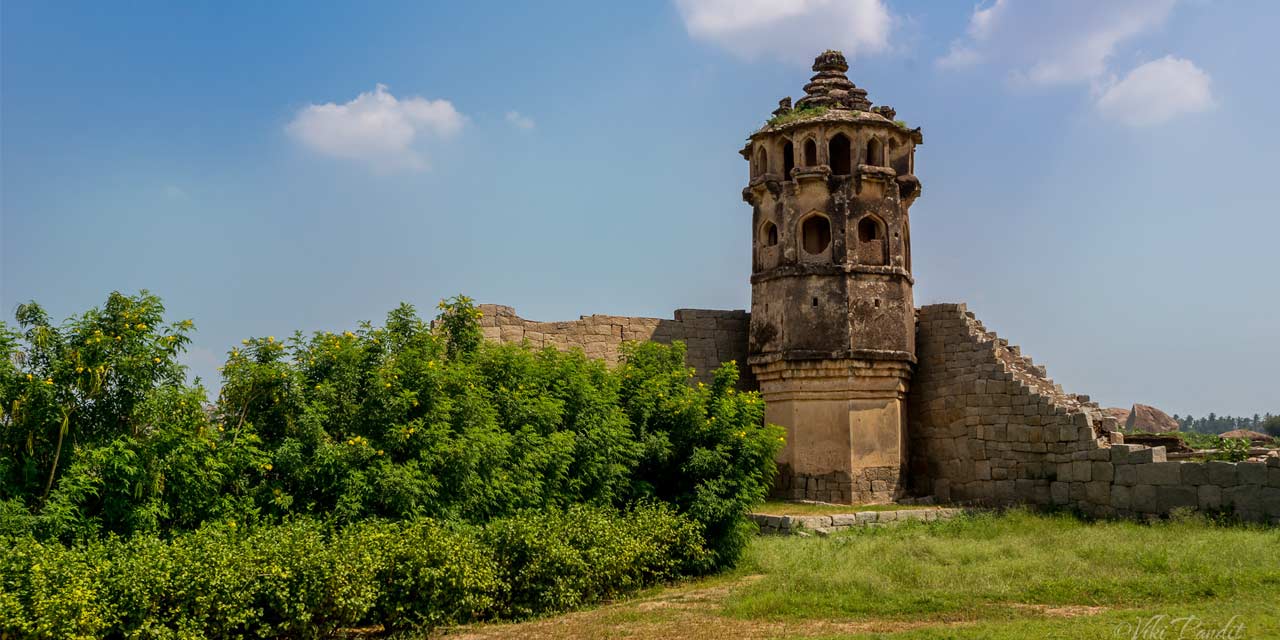
Situated close to Royal Enclosure is Zenana Enclosure. It’s a walled area that once housed the royal women. The queen’s palace, Lotus Mahal and treasury are some of the prominent structures in this complex.
5. Hemakuta Hill Temples
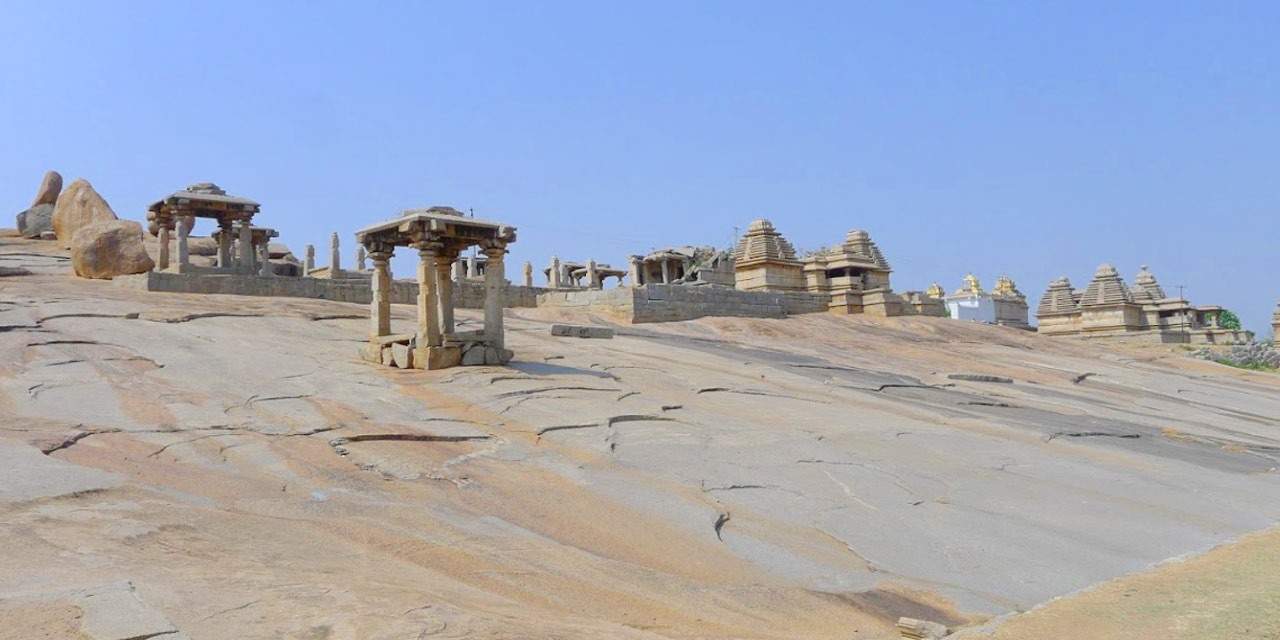
It’s a cluster of temples and ruins near Hampi. The hill has many structures like mandapas, galleries and gateways of various sizes. These structures have been built through several centuries, and some of them are from the pre-Vijayanagara period.
How to reach Hampi?
The Group of Monuments at Hampi is on the banks of the Tungabhadra River, in the central east of Karnataka. You can easily visit the site and explore the history of Hampi, Karnataka.
Following are the different ways to reach Hampi –
By bus – Hampi bus stand connects Hampi to a host of towns and cities of Karnataka. It has regular buses from Bangalore, Hubli, Goa and other nearby places.
By rail – The nearest railway station to Hampi is Hospet Junction (14 km away). It has trains from Chennai, Bengaluru, Mumbai and many other cities of India.
By air – The nearest international airport to Hampi is Bengaluru Kempegowda Airport (356 km away). A small Jindal Vijaynagar Airport (37 km away) is the closest, with regular flights from Bengaluru and Hyderabad.
By cab – Hampi is connected with all parts of India via a good network of roads. And the best way to explore Hampi’s ruins and history is to book a private cab from top car rental companies in Hampi.

